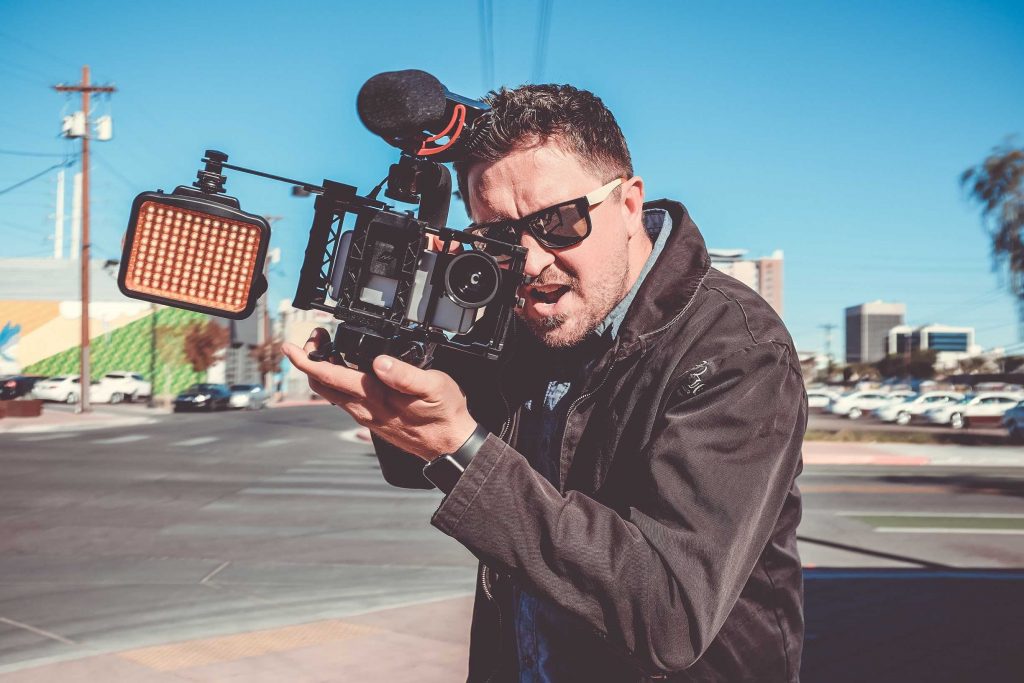Why William Goldman Was Wrong: The Studios Always Make Money
As a starting point, this article examines the New Hollywood period between 1966 and 1985, when audiences were increasingly being drawn to television, and studios were struggling to tap into the period’s complex zeitgeist.
Hollywood films such as The Graduate (Mike Nichols, 1967), Bonnie and Clyde (Arthur Penn, 1967), Easy Rider (Dennis Hopper, 1969), Midnight Cowboy (John Schlesinger, 1969), and Butch Cassidy And The Sundance Kid (George Roy Hill, 1969) did not generate sufficient box office revenue to cover the studios’ overhead costs.[i]
The economic recession in the early 1970s compounded the studios’ concerns about their viability while films such as The Godfather (Francis Ford Coppola, 1972) and Jaws (Steven Spielberg, 1975) signaled a potential solution. For filmmakers and studio executives, the challenge became testing whether or not the blockbuster success of these films was a unique occurrence or if they offered the industry a model from which they could replicate these markers to success.
Academy Award-winning industry screenwriter William Goldman[ii] opens his 1983 autobiographical account with the simple declaration that “nobody knows anything.” This inferred there is a little divergence between investing in motion pictures[iii] and gambling in Las Vegas.
Goldman’s declaration, which could be challenged by his never having worked as a producer, director, or studio executive on any film, has nevertheless been identified as the premise of whether or not one can predict a specific film’s potential return at the box office with any empirically substantiated confidence. For example, a 2005 study (Walls, 2005, pp. 177-190) examining the prospect of modeling a film’s success based on conditional stable-distribution analysis of film returns, appears to affirm Goldman’s aphorism, with a significant clarification by Caves. This became ‘the nobody knows principle’:
That is, producers and executives know a great deal about what has succeeded commercially in the past and constantly seek to extrapolate that knowledge to new projects. But their ability to predict at an early stage the commercial success of a new film project is almost non-existent. (Caves, 2000, p. 371).
However, the question remains if Caves intended to make the point regarding the ability to predict box office revenue after film production has been completed (and when it is about to be released), or at the development stage when studios decide how to package a project by selecting those markers which will mitigate financial risk and maximize revenue.
An extensive body of academic writing [iv] has focused on validating the Goldman aphorism. However, the studios, whose main source of revenue has always films, have excelled at generating revenue for themselves for over a century.
If the film business is such a high risk, the loss-making game of chance, why has Wall Street tolerated this behavior for so long, and continued to reward the shareholders of these media companies?
The research of some of the key academics in the field like Prof. John Sedgwick leads them to conclude that: “Hollywood knows what it is doing.”[I] In Sedgwick (2011) he observes that: “The level of profitability associated with big-budget productions has increased” which leads Sedgwick to conclude that: “Surely somebody must know something?” If the assertions of people like Goldman were correct that film production is a colossal gamble, then the U.S. stock market, as history has demonstrated, would not forgive companies that are in the loss-making business (Stein, 1989).
Furthermore, it is key to an in-depth understanding of the studio business model to differentiate between the revenue generated by the studio for itself, and that ostensibly generated for the producers of, and outside investors in, a specific motion picture.
What it all comes down to again, is the creative accounting practices of the studios. They continue to make colossal amounts of money but refuse to provide stakeholders (producers, directors, screenwriters, etc. with points on a picture) with any form of accounting on the performance of the picture. End-of-year studio profit/loss statements only reflect revenues generated for their entire film production divisions and not for individual titles.
Also, bear in mind that if a studio finances a movie for $80 million, it does not mean that the producers can take those funds outside the studio gates and try to find the best deals. They need to spend it on the studio’s facilities (sound stages, catering, post-production, office space, etc.) which invariably cost 70%+ more. So by the time the movie is released, the studio has already had most of its money back.
Advice to budding screenwriters with a deal on the table. Do not let your agent and/or lawyer link your contract to the studio’s own data (“Monkey Points!”). Link it to box office performance and any other financial data that is substantially verifiable. For instance, ask for $20k for every $1 million your movie makes at the box office. Ask for a bonus for an award nomination and another for a win.
Remember, the vast majority of movies make money, why shouldn’t you?
For more information on how the studios make a lot of money from your script please see Managing uncertainty in creative industries: Film sequels and Hollywood’s profitability, 1988–2015 by Pokorny, Miskell, and Sedgwick.
More next week on the key replicable story elements you can use in your script to significantly improve your chances of sale and most importantly, making a successful movie. Please check-in.
Resources to help you as a screenwriter:
1) You need to know what the studios are looking for and how you can make sure your script gets to the top dog who can actually say “yes”. For that, you need a copy of my peer-reviewed article “Creative Decision Making in the Hollywood Studios”, published by the Journal of Screenwriting. This will exponentially increase your chances of landing an agent and a sale. It will help set you up with a lucrative screenwriting career, free with The Studio Manual (described below).
2) How are you going to write a screenplay that sells for a lot of money if you do not know how the production companies and studios assess your work? I spent five years as a studio analyst, seven as a literary agent, and several more as an expert consultant to various film investment entities to include the EU’s EACEA. The Studio Manual is based on over 15 years in the trenches industry experience, unlike most industry books written by hacks who never spent a day on a set. Yours for only $9.99 (eBook).
3) Both were emailed to you for only $9.99. Please email to request your copies.
[i] Sedgwick &Pokorny, 2010.
[i] Release dates refer to U.S. premieres.
[ii] Goldman, who died in 2018, is considered one of the industry’s most widely known screenwriters, especially outside of the industry. His screenplay for Butch Cassidy and the Sundance Kid solidified a new cowboy buddy genre, for which he won his first Academy Award. He also won an Oscar for All the President’s Men (1976), about journalists Carl Bernstein and Bob Woodward, who broke the Watergate scandal of President Richard Nixon for The Washington Post. Notably, he turned down the opportunity to adapt Mario Puzo’s novel for The Godfather, one of the film case studies selected for this thesis. His 1983 memoir is entitled Adventures in the Screen Trade (1983), whose title is a pun on that for Dylan Thomas’ short story anthology Adventures in The Skin Trade.
[iii] “We conclude that the studio model of risk management lacks a foundation in theory or evidence. Revenue forecasts have zero precision, which is just a formal way of saying that “anything can happen”. Movies are complex products and the cascade of information among filmgoers during the course of a film’s theatrical exhibition can evolve along so many paths that it is impossible to attribute the success of a movie to individual causal factors. In other words, as Goldman said, ‘Nobody knows anything. The audience makes a movie a hit and no amount of “star power” or marketing hype can alter that. The real star is the movie.” De Vany, Arthur, How extreme uncertainty shapes the film industry. New York: Routledge. 2004.
[iv] For example Walls, W. D. (2005). Modeling movie success when ‘nobody knows anything’: Conditional stable-distribution analysis of film returns. Journal of Cultural Economics, 29(3), 177-190; Cunningham, S. D., and Silver, J. (2012). Online film distribution: Its history and global complexion. In Digital disruption: Cinema moves online (pp. 33-66). St. Andrews Film Studies: University of St. Andrews; McKenzie, J. (2013). Predicting box office with and without markets: Do internet users know anything? Information Economics and Policy, 25(2), 70=80.


